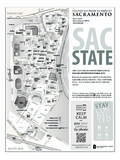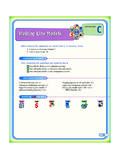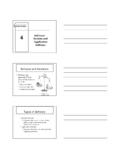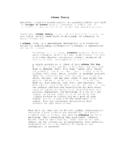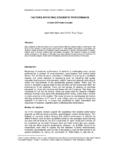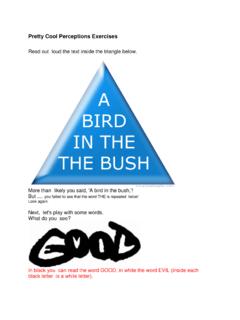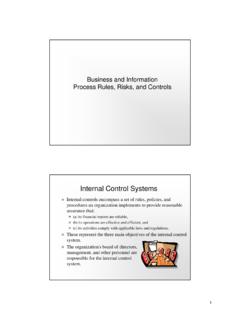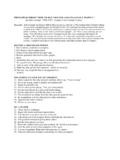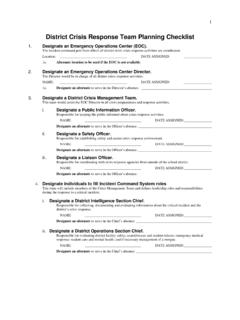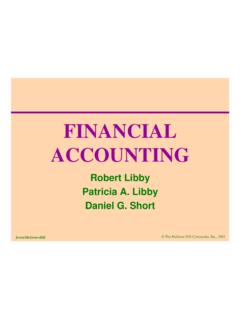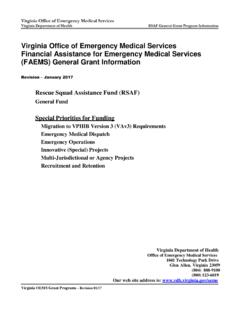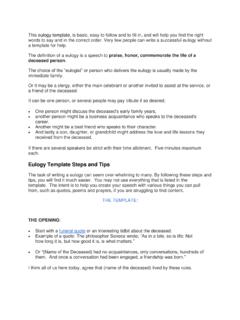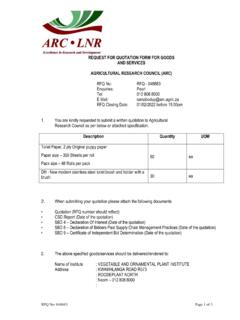Transcription of Report Writing Manual - California State University ...
1 Report Writing Manual Sacramento State Police Department Revised February, 2014 SACRAMENTO State POLICE DEPARTMENT Report Writing Manual PART I GENERAL Report Writing GUIDELINES PURPOSE The purpose of this Manual is to provide guidance to police and community service officers at the Sacramento State Police Department regarding Report Writing . A law enforcement officer s ability to document the facts and activities of an incident directly reflects of the professionalism of the officer and the department, and also affects the ability of the justice system to successfully prosecute a criminal case. INTRODUCTION Nearly half of a police officer s work involves Writing , and because of this, the best arrests will go unprosecuted if the reporting officers do not have the necessary Writing skills to record their actions in a case clearly, concisely, and accurately, with sufficient detail. An officer s Report must document every incident in a complete, clear, and concise manner.
2 Any arrest, follow up investigation, prosecution, or administrative action that is to be taken as a result of the Report must be initiated, supported, or justified by the information contained solely within the body of the Report . Consequently, every police Report must be able to withstand critical review and legal scrutiny, and must be truthful, unbiased, and unprejudiced. Moreover, police officers have a moral and legal obligation to investigate all crimes that are reported to them. USES OF POLICE REPORTS Police reports have many different uses, both within the criminal justice system and beyond: Identification of Criminals Police reports assist with the identification, apprehension and prosecution of criminals by serving as a source document for filing criminal complaints, by providing a record of all investigations, and providing a basis for additional follow up investigations. Investigative Record Police reports aid prosecutors, defense attorneys, and other law enforcement agencies by providing records of all investigations and serving as source documents for criminal prosecution, as well as documenting agency actions.
3 Court Preparation Police reports assist officers prior to or during court appearances by refreshing the officer s memory before testifying, or preparing to provide hearsay testimony at preliminary hearings. Civil Liability Assessment Police reports are essential for risk managers, insurance companies, and civil litigation attorneys for use in determining potential civil liability by documenting events such as accidents or injuries on city, county, or State property, workman s compensation type injuries, as well as to presenting justification for an officer s behavior or actions in a civil complaint or lawsuit against the officer. Statistical Analysis Police reports assist police and civilian administrators as well as the campus community by providing statistical information for analysis of crime trends, equipment needs, manpower issues, continued professional training requirements, and assist in the evaluation of officer performance.
4 CHARACTERISTICS OF AN EFFECTIVE POLICE Report On a daily basis, police officers are faced with a variety of events and incidents. At each one, officers are required to make significant decisions, oftentimes without delay, and while under stress or the benefit of all the facts regarding the situation. For this reason, crime and incident reports must reflect the details of the specific crime or incident for further reference and use. While the details of every incident or crime Report will likely vary, there are six characteristics that all effective reports have in common. An effective police Report is always: 1. Factual. A police Report is an objective accounting of the relevant and observed facts of the case, and any conclusions made by the reporting officer must be supported by articulated and documented facts. Unsubstantiated opinions or conclusions are never to be included in an effective Report . 2. Accurate. The decisions and actions taken as a result of the Report must be supported by accurate information contained in the Report .
5 If any information is inaccurate, the credibility and reliability of the Report will likely be jeopardized. Accuracy is achieved by carefully, precisely, and honestly reporting of all relevant information. 3. Clear. A police Report speaks for the reporting officer when he or she is not present. There should be no doubt or confusion regarding what happened during an incident or crime, based upon the content of a police Report . Clarity in Report Writing is achieved by clear and logical organization of information, the judicious use of simple, common, and first person language, and effective Writing mechanics. 4. Concise. Reports should be brief but also contain all relevant information necessary for a complete understanding of the crime or incident, without additional explanation. Brevity should never take precedence over accuracy, completeness, or clarity in Report Writing . 5. Complete. A complete Report will contain all the relevant facts, information, and details that the reader will need to have in order to have a comprehensive understanding of the crime or incident described in the Report .
6 The Report is complete when it is a complete word picture of the incident, there are no questions left unanswered by the reader, officer actions are explained and justified by the contents of the Report , and both supporting and conflicting information is included. 6. Timely. No decisions can be made or actions taken regarding an arrest or request for follow up investigation if a Report is not submitted in a timely fashion. FIELD NOTES An officer s field notes are the original source documents used to write a police Report . For this reason, if field notes are incomplete, poorly organized, or illegible, they will be of little use to the officer in Writing the resulting police Report . For this reason, field notes should always be taken at the scene, especially when interviewing suspect, victims or witnesses, and whenever the officer wishes to remember specific details at a later time. When Writing field notes, officers should consider that field notes are typically more reliable than memory, especially since reports are typically written several hours after a specific incident or crime has occurred.
7 This time lapse can often cause an officer to easily forget or confuse certain types of information, especially times, observations, addresses, and key words and phrases from statements. Moreover, the judicious use of field notes can minimize or even eliminate the need to recontact the involved parties in a case at a later time. Every event, incident, and crime is different, and for this reason, the facts and information needed by the officer to write a police Report is different. However, field notes should always be able to answer the questions what, where, when, who, how, and why regarding the incident. Regardless of how the individual officer decides to take field notes, the following information is a snapshot of the items that should be included in field notes. Basic Information Additional Information Victims and Witnesses Full name Age Date of birth Race Sex Telephone numbers (home, work, cellular) Address Email address(es) How to contact by telephone or in person Best place to contact Best time to contact Place of employment (including name and telephone number) Occurrence Type of crime Location Date and time of incident Was physical evidence handled by officer, suspect, or victim?
8 Disposition and chain of custody for all evidence Suspect direction of travel Type and description of weapons Threats made with weapons Direct statements made by suspect Case number Assisting officer s actions (and supplements, if necessary) All persons involved: Informants Reporting party Victims Witnesses Suspects, if known Officers Outside agencies and members of outside agencies Medical personnel Members of the media Basic Information Additional Information Suspects Race Sex Age Build Height Weight Eye color Hair color Hair style Facial hair Clothing type Clothing color Clothing style Name and/or street name, if known Unusual physical attributes, such as scars, tattoos, a limp, moles, odor, and missing teeth Can the suspect be identified by the victim or witness? Unusual or memorable gestures Speech peculiarities, such as accents, tone, pitch, or noticeable speech disorder, such as stuttering Jewelry o Rings (identify which hand and finger) o Necklaces o Earrings o Body piercings Right or left handed o Which hand was dominant?
9 O Which hand held the weapon? o Which hand opened a door? o Where was a watch worn? Gang affiliation (if known) Incident Specific Scene description and photographs (if available) Point of entry Point of exit Description of property damage Types and values of property taken Description of suspect vehicle Nature and location of evidence collected Suspect and victim injuries Unique characteristics of the crime Anything else not already mentioned that the officer believes is relevant to the case NOTE TAKING AND CONDUCTING FIELD INTERVIEWS Typically, field notes are obtained from the officer s direct observations and from field interviews with suspects, victims, and witnesses. The field interview, however, is where the officer will learn the majority of the information about a crime or incident. Therefore, the statements taken during a field interview are often critical to learning about the specific facts of a case, because the existence of certain crime elements may only be revealed from the statements of witnesses, victims, and the suspects of a case.
10 An effective field interview should generally follow the following five step format. 1. Separate the involved parties. This minimizes distractions and interruptions. Separating the involved parties also focuses their attention on speaking to the officer, rather than each other, and also minimizes manipulation of witness statements by other involved parties. 2. Establish rapport. Be courteous, considerate, and patient. Briefly tell the person being interviewed why the interview is being conducted, and describe the interview process to the individual. 3. Listen attentively. Ask the person what happened, and allow them to talk about it freely. Let them explain it in terms that they understand. Be sure to keep the person focused on the main subject being discussed in the interview. If they begin to get off topic, guide the person back to the subject, and always use active listening skills to encourage the person to talk. Listen carefully, and pay attention to the details of the incident.
